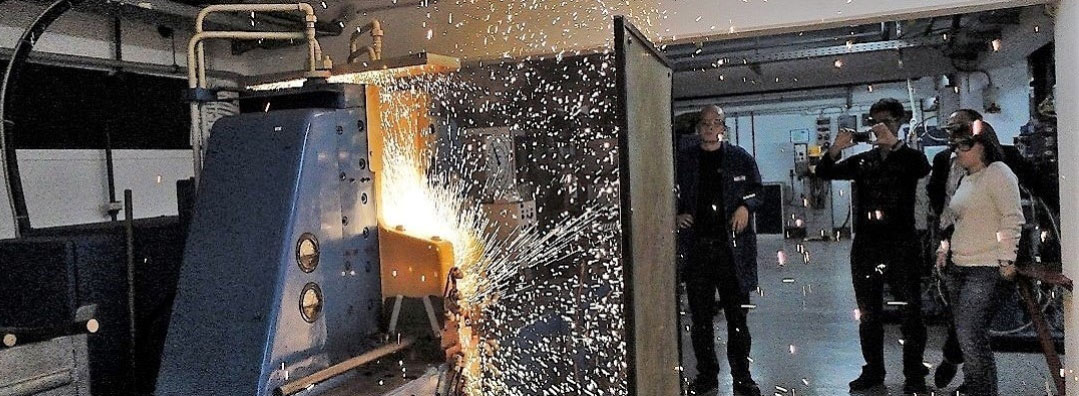
"Welding, a new opportunity for the future".
The Project
Welding sector is deeply involved in almost all production sectors. For decades now, this sector has been covered by harmonized norms and international qualifications. Diplomas that are awarded for these international qualifications are outside jurisdiction of public authorities in any given country.
While the International welding engineer (IWE), International welding technologist (IWT), International welding specialist (IWS) and International welding practitioner (IWP) are at the labor market, both European and national, their diplomas and qualifications are embodied in the business sector. However, the same cannot be said for welders. Although there are harmonized recommendations for International welder (IW) IAB-089r5-14, EU states have different approaches to welder training. In some countries, formal education/training goes through VET and adult education, where participants at the end are provided with diplomas and titles TIG welder, MIG welder, MMA welder, etc. In other countries, however, participants attend courses for specific welding processes (TIG, MAG, MMA) and they have to pass attestation according to international standards (ISO 9606).
What is important to highlight here is that, independently of the obtained document upon completed education/training, the welders have to test their professional level of training, i.e. get certified in each welding company for the specific job they will be carrying out according to international standards (ISO 9606). In other words, European welders are trained differently at different national levels, and are certified in welding companies according to international harmonized standards, which leads to discrepancies. Because of the lack of harmonized approaches in education/training, the consequences are different level of qualifications from one country to another for one and the same job. This results in mobility difficulties of work force at the EU labor market.


It is also crucial to point out that welder is a profession high in demand. There are over 10,000 vacancies in Europe at the moment (source:EURES), and according to free assessment, there could be up to 30,000. This is, indeed, a promising profession worth investing in.
This project idea is based on the European employment strategy. The Employment package was launched in 2012 that, among other things, stresses the importance of several elements crucial for development of this project:
-
1. Reforming labor markets by:
- a. developing lifelong learning and active labor market policies,
- b. delivering youth opportunities.
-
2. Investing in skills by:
- a. coping with skills mismatches
- b. ensuring better recognition of skills and qualifications and anticipating skills needs
- c. improving synergy between the worlds of education and work.
- d. Additionally, the EU Youth strategy 2010 - 18 is aiming to:
- e. provide more and equal opportunities for young people in education and in the job market
- f. encourage young people to actively participate in society.
For attracting young people to opt out for welding profession we need modern and attractive training and upskilling programs. We need new vocational curricula, new teaching methods and cutting-edge didactic tools, as well as emphasis on lifelong education of welders.
Key quality indicator of such programs in VET and adult education is their capacity to train all the participants to obtain competencies necessary for the labor market. Innovative curricula, platform for welders, modular approach, horizontal and vertical passageway in both I-VET and C-VET, lifelong education, skills, knowledge and stability are key elements of this project. Also, we foresee stronger use of learning experiences and combining face-to-face and online (blended learning), which will increase student's motivation and the efficacy of learning.
This goal will achieved through the following actions:
- 1. research actual labor market needs in the area of welding with emphasis on welders;
- 2. recognize and define the profession welder for three welding processes: MMA, MAG/MIG and TIG;
- 3. develop proposals for profession standards according to EQF principles and international qualifications for defined professions;
- 4. develop qualification standards according to EQF principles and international qualifications for defined professions;
- 5. develop European framework VET curricula for defined professions and thusly further and harmonize the educational offer in the area of welding at local, national and European level;
- 6. develop a welding networking site as environment for updating the knowledge of all welders;
- 7. improve the competence of teachers and trainers;
- 8. offer quality, efficient and innovative welder education based on SMART learning outcomes, while maintaining the flexibility of adjustment to constant and speedy changes in wider social context.
- 9. Bring welding closer to young people, their interests and abilities.
The partnership, composed by organizations from 4 countries, has the adequate expertise and a recognized experience to develop the common guidelines that will be further adjusted to training actions. The EWF system, involving 31 European countries and a network of Large Companies and SMEs (50.000+), will play an important role in promoting and disseminating the project throughout European organisations and enterprises with interest in these technological areas, allowing the creation of a well structured support for a medium term implementation of the project objectives. The results of this project provide the basis for future implementation of these guidelines within the context of VETs and the working industrial sectors.
